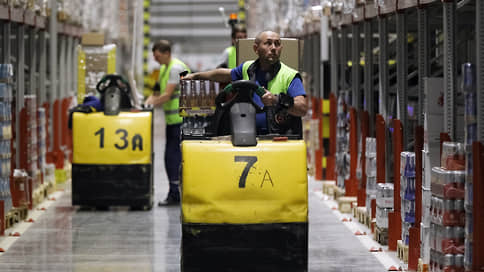Russian companies will form in Kyrgyzstan
[ad_1]

The attempt of Russian business to build new routes for parallel imports, including from Central Asia, stimulates the development of logistics real estate markets in these countries. In the vicinity of Bishkek, structures associated with the family of politician Omurbek Babanov will build a complex with an area of 163 thousand square meters. m. Its appearance will increase the volume of high-quality warehouses in Kyrgyzstan by almost four times. Russian specialized developers, in turn, are not yet ready to work in this part of the post-Soviet space, fearing high risks.
Near Bishkek, on 28.8 hectares, it is planned to build a large warehouse complex in Kyrgyzstan – Asia Park for 163 thousand square meters. m, Kommersant was told in the NF Group (project consultant). They clarified that the main contenders for the lease of future space are companies from Russia, including logistics operators and marketplaces.
A Kommersant source in the market says that the Trust KG structures are involved in the implementation of the project near Bishkek. In SPARK, Zhanybek Myrzabaev is listed as the company’s general director, but Kommersant could not be contacted. His full namesake is on the board of directors of the Kyrgyzstan Bank, where Kommersant did not promptly respond. Local media called Mr. Myrzabaev the nephew of the Kyrgyz politician Omurbek Babanov, who previously held the post of prime minister of the republic. The owner of Trust KG was previously Aya Babanova, who was called the sister of Mr. Babanov in the media.
Asia Park area is significant for Kyrgyzstan. NF Group partner Konstantin Fomichenko explains that now the entire volume of quality supply in the country is only 46 thousand square meters. m and with the commissioning of the new logopark, this figure will increase by 4.5 times. Due to the lack of space, rental rates in Kyrgyzstan are comparable to objects in the Moscow region – 6.5 thousand rubles. for 1 sq. m per year, he adds.
The interest of Russian business in warehouses in the countries of the post-Soviet space began to grow actively since last autumn due to the forced revision of logistics chains and the development of parallel imports. But this demand almost immediately ran into a shortage of warehouse supply (see Kommersant dated October 18, 2022). In the same Kyrgyzstan, according to Mr. Fomichenko, the vacancy rate in the first quarter was zero. Yevgeny Bumagin, head of work with warehouse and industrial premises at IBC Real Estate, notes that in January-July, Wildberries and Ozon rented 65 thousand square meters in Kazakhstan. m. Other Russian retailers are also actively entering the region – DNS, Sportmaster and Letual. “Central Asia has a total population of 80 million people, it’s a big market,” he notes.
Andrey Osipov, director of economics at 3PL operator NC Logistic, attributes the growing interest in warehouses in Central Asia to an increase in trade with China, reorientation of imports, and expansion into the marketplace region. Through Kyrgyzstan, according to him, now there is a flow of raw materials from China for the light and automotive industries. The planned construction of the China-Kyrgyzstan-Uzbekistan railway could strengthen the country’s role in transport logistics, Mr. Osipov notes. Kommersant’s interlocutor from among customs brokers says that Kyrgyzstan is actively used for the transit of European sanctioned cargo, although this niche is rather limited.
So far, there are few incentives for Russian developers to enter Central Asia. Andrey Postnikov, General Director of Orientir, draws attention to the fact that demand for warehouses inside Russia is now, more than ever, high with almost zero vacancy. The expert calls the risks of working in Central Asia high due to the low liquidity of local markets and the current development of transport infrastructure. Alexey Smerdov, investment director of Parus Asset Management, also draws attention to the fact that all prices in Central Asia are now pegged to the dollar, as it was in Russia until 2014: “This creates additional currency risks for projects.”
[ad_2]
Source link





